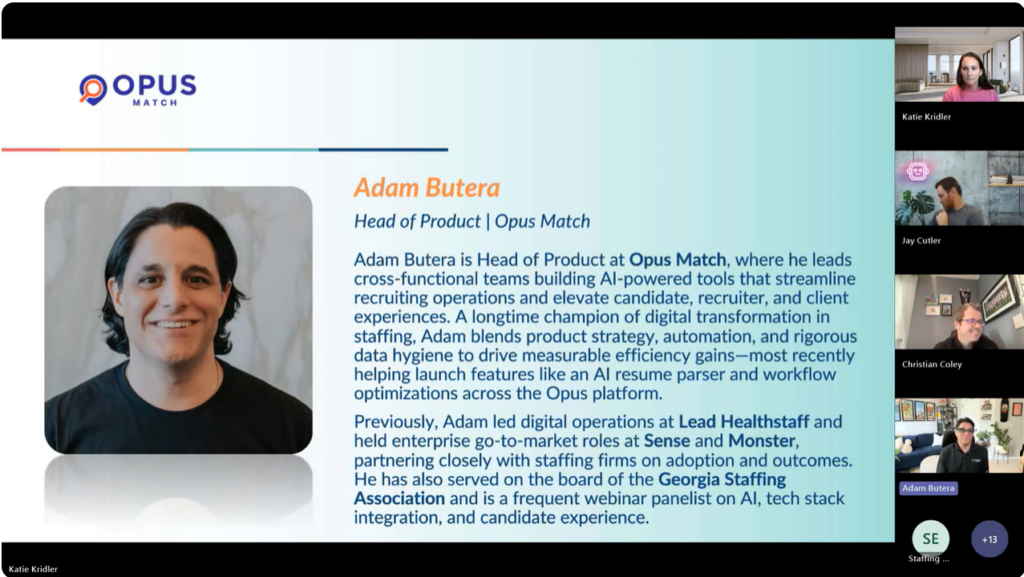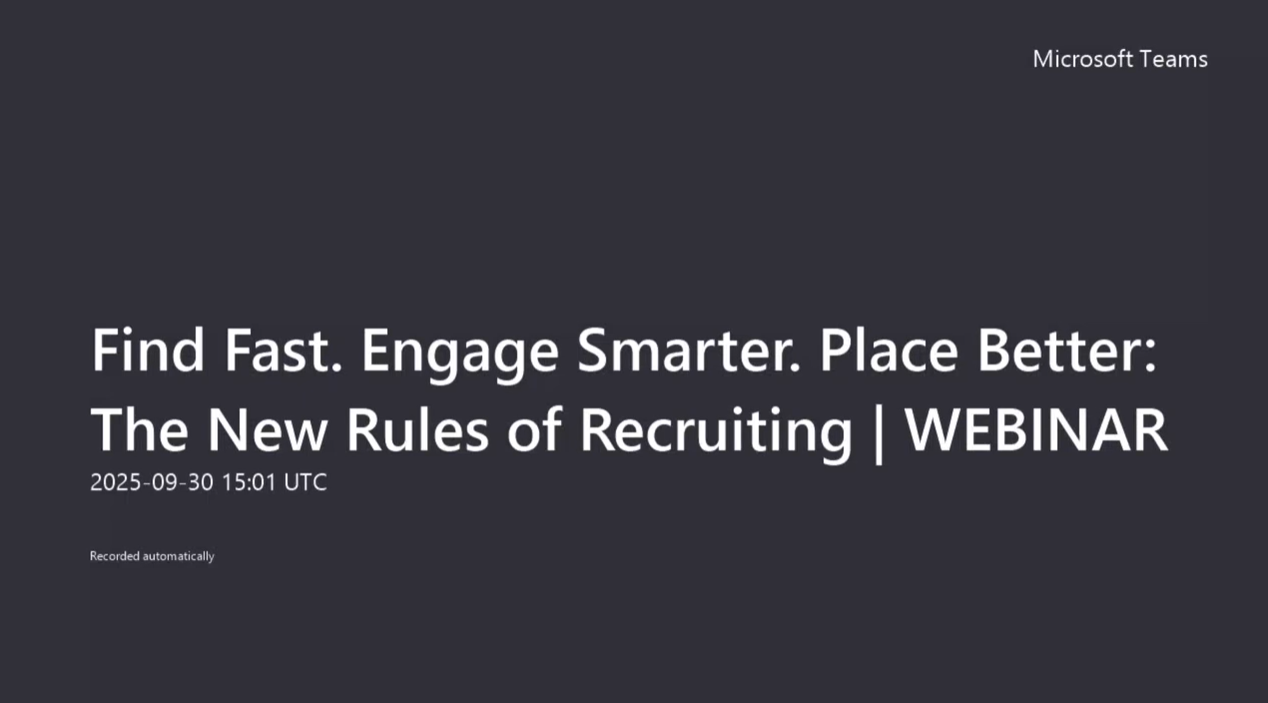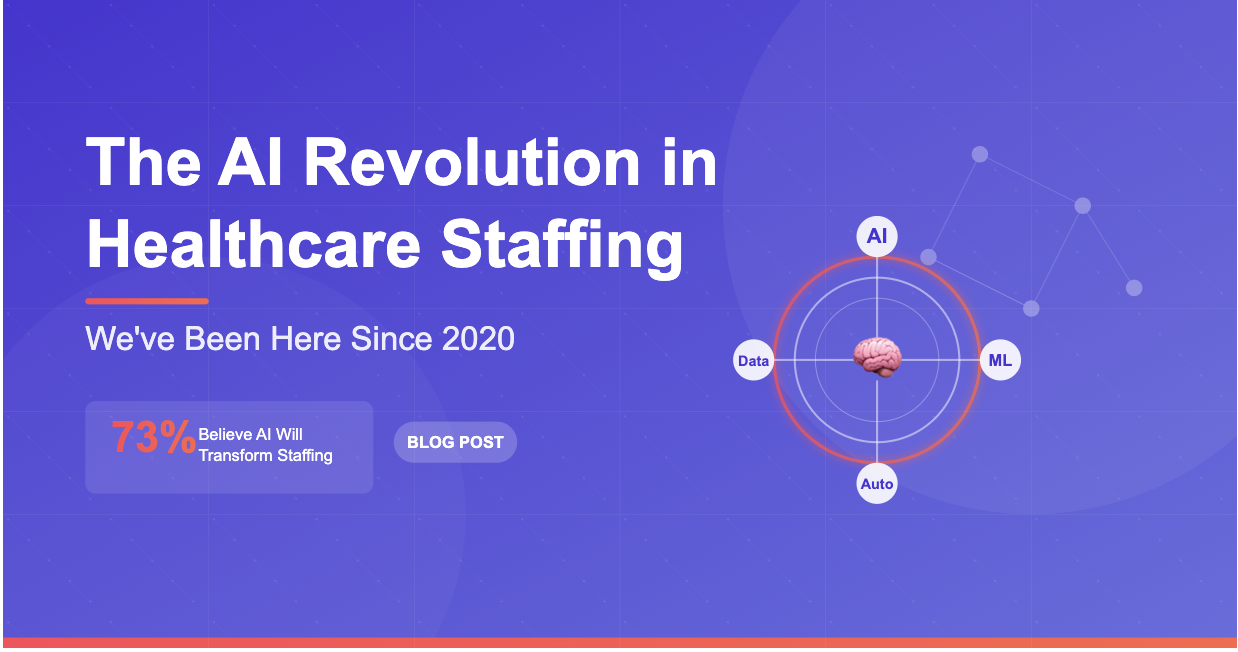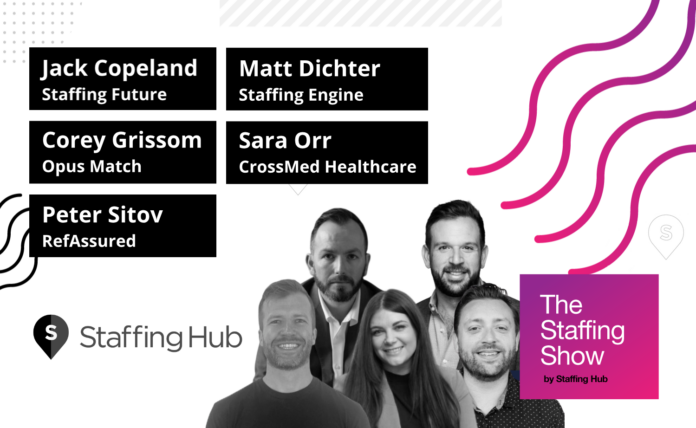The staffing industry is evolving at record speed. Candidates expect quick responses, seamless experiences, and personalized job recommendations. At the same time, firms are under pressure to fill roles faster while reducing costs and building long-term loyalty.
That’s why Newbury Partners hosted the series finale of their webinar series: “Find Fast. Engage Smarter. Place Better. The New Rules of Recruiting.” The event brought together experts from Staffing Engine, SourceFlow, and Adam Butera, Head of Product at Opus Match, to share actionable strategies for how firms can adapt and thrive.
You can also watch the full webinar on YouTube.
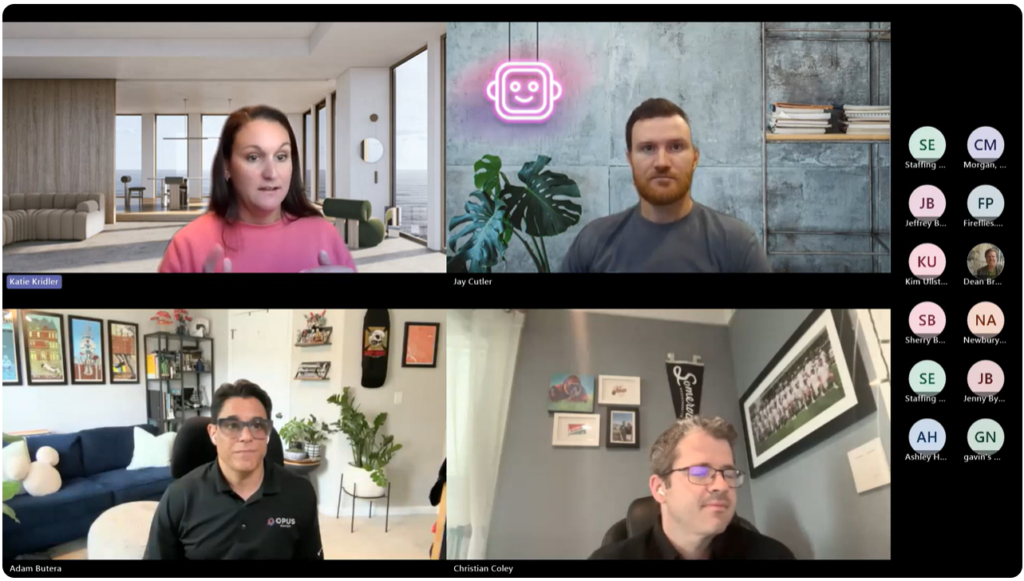
This recap explores three major themes from the discussion:
- Speed as a competitive advantage
- Engaging smarter and building trust at scale
- Placing better through intelligent workflows and fit matching
Speed: Why Real-Time Engagement Wins
Moderator Jay Kotler captured the urgency perfectly: “time kills all deals.” The window to capture candidate attention has collapsed. Ten years ago, a same-day response was competitive. Today, candidates expect agencies to acknowledge and engage within minutes—not hours.
Speed matters for several reasons. Candidates rarely apply to just one agency, meaning whoever responds first often wins the relationship. Any delay creates what many in staffing call the “black hole” experience, where candidates feel ignored or forgotten. And in a competitive market, the firm that can move a candidate from application to submittal the fastest will consistently outpace its rivals.
Technology can help. Chatbots, web forms, and automation workflows make it possible to deliver real-time engagement, but Adam cautioned against over-reliance on tools. “AI is incredibly powerful, but it’s just a tool. At the end of the day, this is still a people business,” he explained. Automation should free up time, not replace human interaction.
For staffing firms, this means building an omni-channel strategy:
- Job boards can still be valuable, but firms need to invest in the ones that drive real results.
- Owned channels—like career sites, mobile apps, and social media—are increasingly critical for direct candidate engagement.
- ATS databases are treasure troves of passive talent, provided firms maintain data hygiene.
The firms winning on speed aren’t just the ones with the best tech—they’re the ones that balance technology with timely, personalized recruiter handoffs.
Engage Smarter: Building Trust at Scale
While speed gets candidates in the door, trust keeps them there. The panel agreed that automation often suffers from a reputation problem: too many firms set up “set it and forget it” email or text campaigns that feel robotic and impersonal.
Building trust requires more than sending messages. It means creating consistent, branded experiences that reassure candidates they’re in good hands. Adam emphasized that recruiters should think about candidate engagement the way streaming platforms think about user engagement: “Candidates want the right content, at the right time, in the right channel. If you can deliver that, they’ll stay engaged”.
Practical steps staffing firms can take include:
- Consistent brand voice: Every email, text, and LinkedIn message should look and feel like it’s from the same trusted brand, not a collection of random touchpoints.
- Personalization through data: Good engagement starts with clean, complete candidate data. Without it, even the best automation tools produce noise instead of value.
- Team-wide adoption of AI: Adam stressed that “AI is a team sport.” Recruiters, sales reps, marketers, and operations leaders must all be aligned on how tools are being used, or else gaps appear where candidates slip through unnoticed.
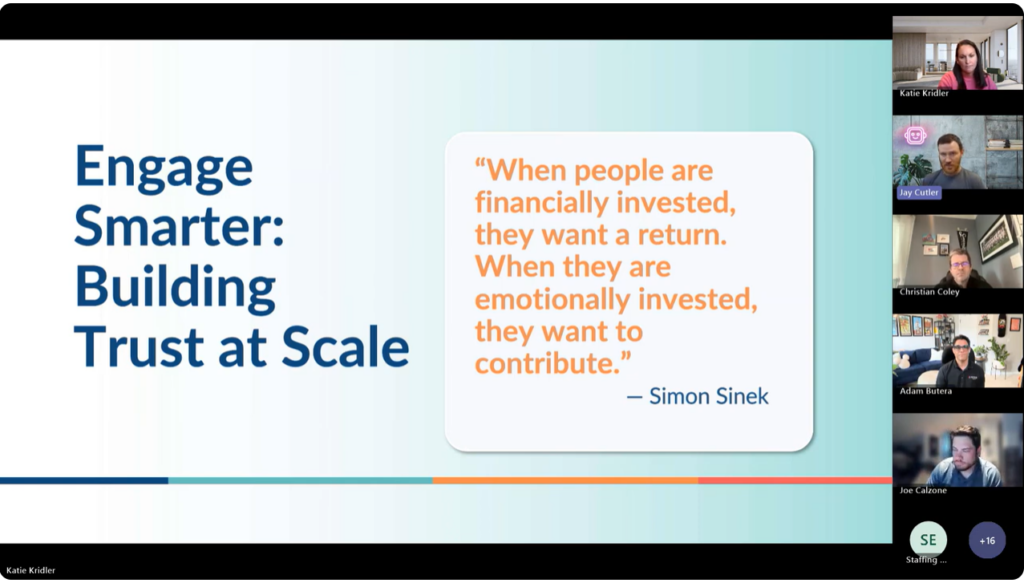
Timing is just as important as messaging. A recruiter might have the perfect email drafted, but if it lands when the candidate is mid-assignment or not ready to switch jobs, it goes ignored. Predictive analytics and engagement scores help firms avoid that pitfall by surfacing when candidates are most likely to be receptive.
In short, smarter engagement is about creating a two-way relationship at scale. It’s not just blasting job postings—it’s anticipating candidate needs, responding quickly, and showing that your agency understands their journey.
Place Better: Intelligent Workflows and Fit Matching
The final theme of the webinar tackled the “place better” mandate. In today’s staffing market, it’s not enough to simply find candidates—you need to ensure they’re the right fit, both for the job and for long-term success.
Adam described Opus Match’s vision for the future of matching: “The North Star is aligning what candidates are capable of with what they actually want to do. That leads to longer placements and stronger careers”.
Traditional matching has relied heavily on resumes and keyword parsing. But resumes rarely capture the full picture. By layering behavioral data (like search activity or app engagement) and predictive indicators (such as readiness to switch roles), AI can produce fit scores that help recruiters prioritize outreach.
Workflows also matter. Every step in the recruiting process is an opportunity to gain or lose efficiency. Adam emphasized that firms should think about improvements incrementally:
- AI-assisted submissions can cut submittal write-up time from 20 minutes to just 2, while still allowing recruiters to personalize the final draft.
- Automated resume reformatting ensures consistency and saves recruiters from repetitive formatting tasks.
- Credentialing and back-office automation can reduce bottlenecks outside of sales and recruiting, accelerating placements across the board.
Importantly, Adam cautioned against the myth of the “silver bullet.” No single technology solves every challenge. Instead, the most successful firms layer multiple incremental improvements—shaving minutes from each step—to dramatically improve overall speed and quality. “There isn’t a silver bullet. Success comes from incremental improvements at every step of the workflow—always with a human in the loop,” he noted.
FAQ: The New Rules of Recruiting
Why is speed so important in recruiting?
Because candidates apply to multiple agencies, the firm that responds first—often within minutes—has the best chance to engage and place them.
How can AI improve candidate engagement?
AI can identify intent signals, prioritize outreach, and personalize job recommendations. This allows recruiters to focus on the right candidates at the right time.
Will AI replace recruiters?
No. AI reduces administrative work and enhances decision-making, but recruiters remain critical for trust, relationship-building, and career guidance.
What does “placing better” mean?
It means moving beyond keyword matching to intelligent fit matching that accounts for skills, passions, and timing—resulting in higher-quality, longer-lasting placements
Final Word
The new rules of recruiting are clear:
- Find fast by building omni-channel strategies and engaging candidates in real time.
- Engage smarter by delivering personalized, brand-consistent communication at the right time.
- Place better by embracing intelligent workflows and AI-powered fit matching.
As Adam Butera emphasized, “This is still a people business. AI and automation should free recruiters to spend more time where it matters—building relationships and creating better candidate experiences.”
Learn more about how Opus Match’s AI-driven candidate portal helps staffing agencies find fast, engage smarter, and place better.
